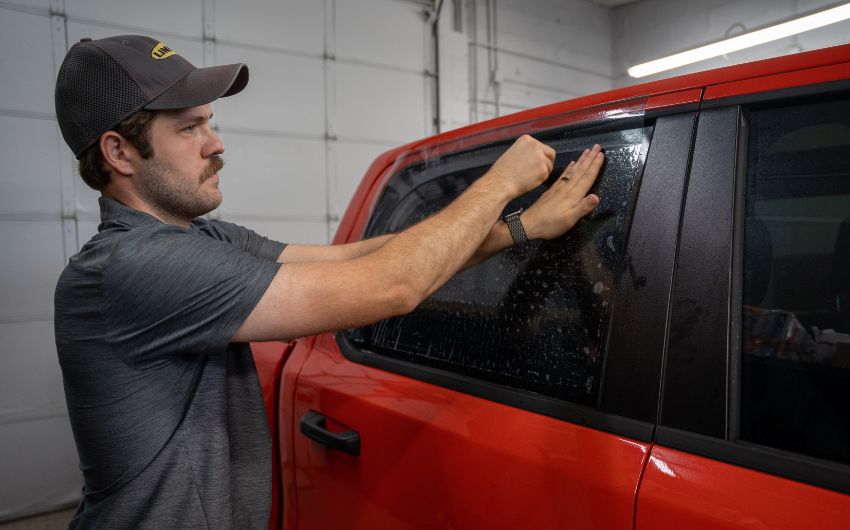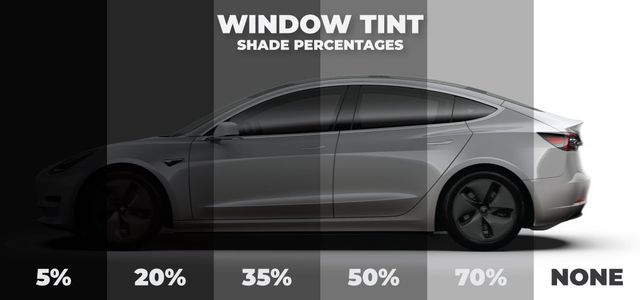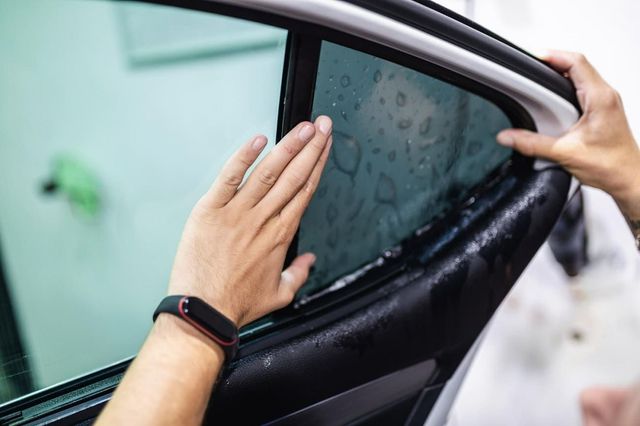Window Tinting Laws and Guidelines: What You Need to Know Prior To Tinting Your Automobile
Prior to waging home window tinting for your car, it is necessary to familiarize on your own with the diverse regulations and standards that regulate this method throughout various states. These regulations determine the permitted degrees of tint darkness, often gauged by visible light transmission (VLT) percentages, and consist of certain stipulations for front windscreens focused on making certain road security. Additionally, specific territories may supply medical exemptions for people with qualifying problems. Recognizing these intricacies can conserve you from prospective legal ramifications, yet what are the details rules in your state?
Review of Home Window Tinting Laws
Home window tinting laws are often based on variant across different jurisdictions, mirroring local laws and safety and security considerations. These legislations dictate the permissible degrees of color darkness and reflectiveness on car windows, making sure that chauffeurs maintain ample exposure while additionally shielding against damaging UV rays and warm.
A lot of laws categorize home window tinting based upon the Visible Light Transmission (VLT) percentage, which shows the quantity of light that can pass via the window. Usually, reduced VLT percents symbolize darker colors. Laws usually differentiate between the front, side, and back home windows, with stricter restrictions related to the front windshield to improve safety for both the motorist and other road users.
Conformity with home window tinting guidelines is critical, as infractions can result in fines, obligatory removal of the tint, and possible increases in insurance policy premiums. It is essential for vehicle owners to familiarize themselves with neighborhood regulations prior to continuing with home window tinting setups.
State-by-State Color Regulations
Understanding the details window tinting guidelines in each state is vital for automobile owners seeking to follow the law. Each state in the united state has established its own collection of regulations controling home window tinting, which can differ significantly. These guidelines often determine the permitted levels of color darkness, the kinds of home windows that can be tinted, and any medical exemptions that may use.
For example, states like California have strict limitations on tint darkness for front windows, while others, such as New Mexico, might allow darker tints. Furthermore, specific states mandate certain exposure portions for different home windows, consisting of the windshield, front side home windows, and rear windows. It is essential for automobile owners to familiarize themselves with their state's laws to stay clear of prospective fines or fines.
In addition, some states may call for a certification sticker label to be positioned on tinted home windows, indicating conformity with state regulations. Failing to comply with these laws not just runs the risk of legal consequences but can additionally influence security and presence while driving. Car proprietors need to perform extensive study or get in touch with regional authorities to ensure full understanding and compliance with state-by-state tint regulations.
Allowed Tint Degrees and Kinds
Many car proprietors might be surprised to discover that allowed tint degrees and kinds vary extensively across various states. Each state has established its very own policies regarding the allowable darkness and reflectivity of home window color, typically determined by Visible Light Transmission (VLT) percents. VLT refers to the quantity of light that can pass with the tinted home windows; hence, a lower portion suggests a darker tint.

In addition, the kinds of tint materials allowed can differ, with some states prohibiting mirror-like or metallic surfaces. It is vital for automobile proprietors to acquaint themselves with their state's specific laws to ensure compliance. Non-compliance can result in fines, obligatory removal of the tint, or other legal you could try these out repercussions, making it crucial to recognize these guidelines prior to waging installment.
Medical Exceptions for Tinting
While not all states give allocations for medical exemptions concerning window tinting, those that do identify the need for particular individuals to improve exposure and comfort due to clinical conditions. Numerous clinical problems, such as lupus, skin cancer, and particular eye conditions, can provide people especially sensitive to sunshine. As a result, these people might call for darker tints to protect themselves from dangerous UV rays and glow.

It is essential to note that despite having a medical exemption, there may still be limitations on the degree of tint allowed. Conformity with state laws makes sure that individuals are both safeguarded and within legal restrictions. Those taking into consideration medical exemptions need to contact their neighborhood Division of Electric motor Automobiles or equivalent authority to comprehend the procedures and needs needed to use for an exemption effectively.
Penalties for Non-Compliance
Falling short to conform with home window tinting regulations can lead to considerable charges, which vary by state. Legislation enforcement agencies are empowered to issue citations for cars that do not abide by the defined tinting guidelines. These fines typically include penalties, which can range from moderate quantities to several hundred bucks, depending on the extent of the infraction and the state in concern.
In some jurisdictions, repeated offenses might lead to intensifying fines or extra charges, such as necessary court appearances. Non-compliance might necessitate the removal of prohibited tinting, often at the owner's expense. In severe situations, regular offenders may deal with suspension of their lorry registration till compliance is achieved.
Additionally, insurance implications might arise from receiving multiple citations for home window color offenses. Insurance providers may check out such offenses as an indicator of riskier actions, potentially causing boosted costs or trouble in coverage.
To prevent visit the website these charges, it is important for lorry owners to familiarize themselves with their regional home window tinting regulations and ensure that their vehicle complies (Window Tinting). This proactive strategy not only stays clear of lawful implications yet likewise advertises roadway safety and security
Conclusion

The majority of regulations categorize window tinting based on the Visible Light Transmission (VLT) portion, which indicates the quantity of light that can pass through the home window. Conformity with home window tinting policies is essential, as violations can result in fines, mandatory removal of the tint, and prospective increases in insurance coverage costs.Understanding the particular window tinting policies in each state is vital for vehicle owners seeking to abide with the regulation. These laws frequently determine the permitted degrees of tint darkness, the kinds of windows that can be tinted, and any clinical exemptions that may use.
For instance, states like California have strict limitations on color darkness for front home windows, while others, such as New Mexico, might enable darker colors.